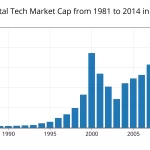The Rise of Augmented Reality (AR) and Virtual Reality (VR)
In recent years, the world of technology has witnessed a significant advancement in immersive experiences through the rise of Augmented Reality (AR) and Virtual Reality (VR). These groundbreaking technologies have opened up new frontiers in various industries, transforming the way we interact with digital content and the physical world. In this blog post, we will explore the rise of AR and VR, their potential applications, and the impact they have on different sectors.
Understanding Augmented Reality (AR) and Virtual Reality (VR): To grasp the significance of AR and VR, it’s essential to understand the fundamental concepts behind them. Augmented Reality overlays digital information onto the real world, enhancing our perception and interaction with the environment. Virtual Reality, on the other hand, immerses users in a computer-generated virtual environment, simulating a realistic experience that can be interactive and highly immersive. Applications of AR and VR:
2.1 Gaming and Entertainment: One of the most well-known applications of AR and VR is in the gaming and entertainment industry. AR games like Pokemon Go have captivated millions of players, blending digital elements with the real world. VR gaming, on the other hand, offers a completely immersive experience, transporting players into virtual realms with a sense of presence and interaction.
2.2 Education and Training: AR and VR have immense potential in revolutionizing education and training. They can provide immersive simulations, allowing students to explore historical events, visit faraway places, or conduct complex scientific experiments. In fields like medicine and engineering, VR simulations enable trainees to practice procedures and hone their skills in a safe and controlled environment.
2.3 Architecture and Design: AR and VR have become invaluable tools in architecture and design. Architects can create virtual walkthroughs of buildings before construction, allowing clients to visualize the end product. Interior designers can use AR to overlay virtual furniture and decor on a real space, giving clients a realistic preview of their design choices.
2.4 Healthcare: In the healthcare sector, AR and VR have proven to be transformative. Surgeons can use AR to overlay critical information during operations, enhancing precision and reducing the risk of errors. VR therapy has shown promising results in treating phobias, PTSD, and other mental health conditions by providing controlled and immersive environments for exposure therapy.
2.5 Retail and E-commerce: AR is reshaping the retail industry by enabling customers to try on virtual outfits, visualize furniture in their homes, or see how cosmetics will look on their faces. VR is also finding its place in virtual showrooms, allowing

































